Cuonzo Martin, the Fight for His Life and Why He Took the Job as Head Coach of Missouri
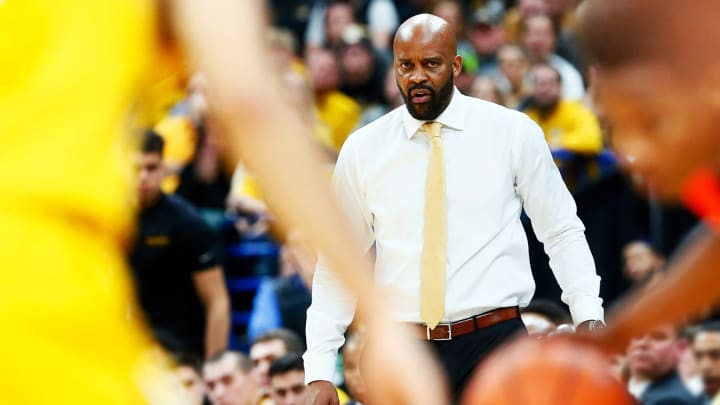
Missouri? When Valencia Martin first heard, last March, that her brother had been offered the head basketball job at the state’s flagship university, she was hoping that he’d say no. Why not stay at Cal? Or pursue the far less fraught post at Illinois? “There was so much going on with Mizzou,” she says. “With all the racial tension, a lot of minority students were leaving. It really was a scary place for me. I was just, like, Ugh.”
Missouri? With the school’s reputation and enrollment gutted by several racial incidents and a football-team boycott in 2015, the state at large had its own issues. Ferguson, after all, has become shorthand for black resistance to abusive policing, riotous unrest and splintering race relations since the August 2014 fatal shooting of black teenager Michael Brown. The coach’s brother, living just two blocks away, heard those six gunshots fired by a white patrolman. He saw Brown’s body lying untouched, for hours, in the street, and saw the tanks and tear gas come rolling in.
“That wasn’t just an insult,” says Dale Martin. “That wasn’t human. You don’t do that. I mean, we came out and saw the situation and it was, like, What is going on? That was bad. It was deep. It changed everybody.”
The coach’s mother, raised in St. Louis, has talked to Michael Brown’s parents, their nightmare supreme proof of why she has long urged her two sons and seven grandsons to be ultra-respectful if stopped by police. Even as her son settled into his new position at Mizzou, black suspicion of state authority assumed a uniquely hard cast. Last June the NAACP—citing both a new state law that, critics say, makes it more difficult to sue for housing or employment discrimination, and a state attorney general’s report stating that black drivers are 75% more likely to be pulled over in Missouri than whites—warned its constituency of a “looming danger,” and issued its first-ever travel advisory for a specific state.
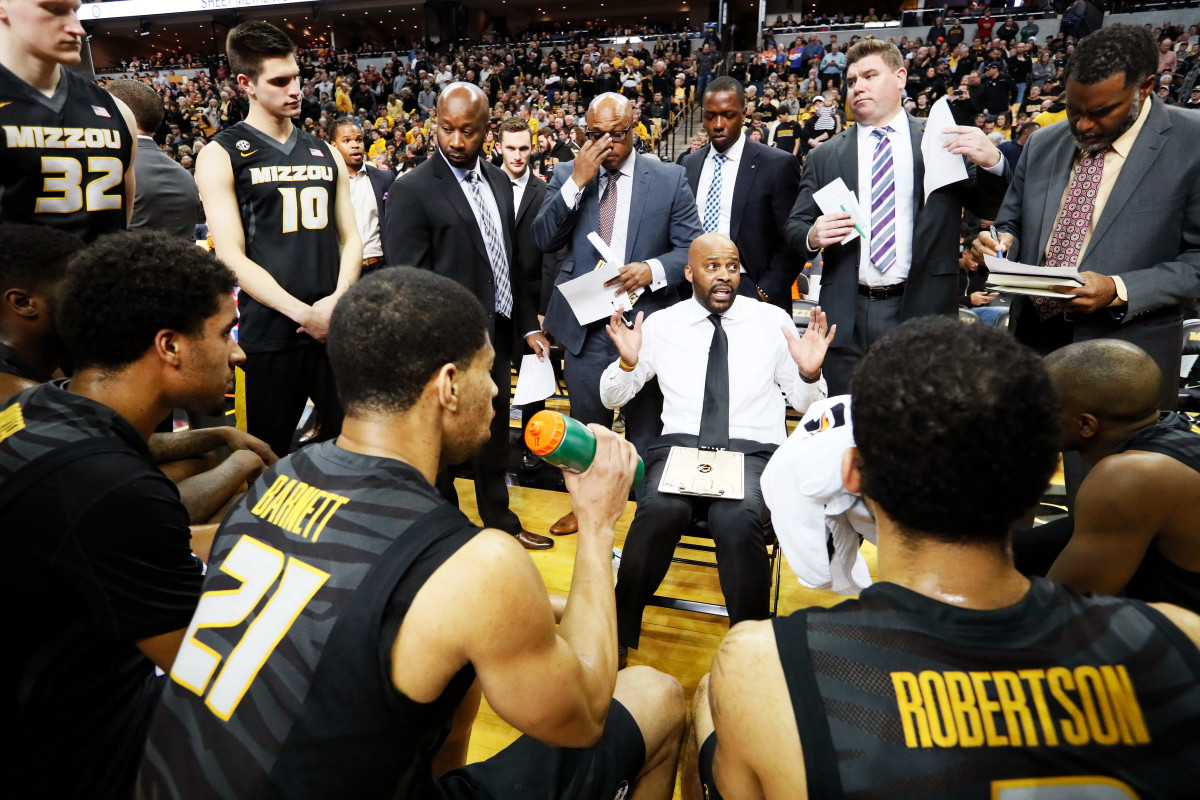
Then, last fall, St. Louis endured more than a month of daily protests after another white police officer, Jason Stockley, was acquitted in the 2011 shooting death of Anthony Lamar Smith. The coach’s sister lives just over the Mississippi River, in Illinois. Her son attends Lincoln University in Jefferson City, Mo., and every mile of his two‑hour, 20-minute drive home makes her nervous.
“Missouri, specifically,” says Valencia, an assistant principal at East St. Louis High. “So many things are happening so rapidly—and -randomly—now, it just makes you very afraid. That’s a sad way to be.”
Yet Cuonzo Martin, 46, still left what his wife, Roberta, calls “liberal, forward-thinking” Berkeley, where in three seasons he had gone 62–39, and has embraced Columbia in spite of—and partly because of—all that. The father of a teenage boy, he seethed over Brown’s death. The son of crime-torn East St. Louis, Ill., he knows the resentment stirred when cops deploy like an occupying force. But even as Martin winces, he issues his thoughts with a rumbly calm. He has beaten back serious illness, and his deal with God included a pledge to view the world in a more Christian light.
But Martin also harbors this quiet notion that he was saved from bullets and cancer for a greater reason. That, maybe, he was marked to return home and help bridge a great divide. When the Mizzou job beckoned, last spring, he and Roberta talked about that.
“It scared me going back to the middle of the country,” she says. “But we were, like, Somebody has to go back and be an example. Somebody has to be a mentor. Somebody has to be the one others can look up to. So this became the next step of our journey.”
We’re not a racist institution.
—David Steelman, chairman, University of Missouri Board of Curators, Dec. 13, 2017
It’s no doubt foolish to designate an entire school, town or state inherently “racist,” just as it is to declare one “progressive” or “good.” Race has forever been America’s core problem, sea to shining sea, the wound that never heals. Over time it can scab over, even shrink, until a new crisis erupts to reveal that same old ooze. Manzanar. Selma. Boston. Charlottesville. So when people in Missouri tell you that their racial conflicts are no different from any other state’s, they have a point.
Indeed, seeing the love that has enveloped Cuonzo Martin since his arrival last spring, it’s easy to buy the party line that the university’s crises arose less from a singularly dark dynamic than from administrative ineptitude. White and black mix giddily at sold-out Mizzou Arena these days, high on Martin’s top five recruiting class and an 11–4 start, and it’s vital to note that he’s no pioneer. The basketball team was the first at Missouri to hire a black coach in a major sport (Mike Anderson in 2006), and its football team in ’13 was rightly celebrated as a haven of tolerance for its embrace and protection of then closeted gay—and black—defensive end Michael Sam.
But the state’s subsequent social and legal -tumult also suggests a deeper strain—and caused an unprecedented backlash. In November, Fodor’s, the travel-guide giant, named Missouri one of its 10 places to avoid in 2018, right between Myanmar and Honduras. That followed the lead of the NAACP, whose advisory was made with a totality never leveled at the likes of, say, Jim Crow Mississippi. “Travel with extreme CAUTION,” says the NAACP’s warning. “Race, gender and color crimes have a long history in Missouri.”
From its start as an up-for-grabs border state—slaveholding, but not part of the Confederacy—Missouri has been a distinctly volatile racial battleground. In the century after the Civil War, even as black urban populations boomed, so-called Sundown Towns became common in the state’s rural areas and some 60 African-Americans were lynched, according to research done by the Equal Justice Initiative. Missouri’s wound remains particularly raw, then, not necessarily because the state is “more” racist. It’s because Missouri has been historically primed to showcase, in the extreme, every rough step in a nationwide struggle.
“We’re right in the middle of the country,” says former law professor Michael Middleton, the school’s interim president in 2015–16. “Missouri represents every perspective. Everything surrounds Missouri—and comes to a head in Missouri. So it doesn’t shock me that Missouri would be the place where something like what happened, happened.”
In September 2015, Payton Head, the university’s Student Association president, stated that he had been subjected, “multiple times,” to racial slurs on the Columbia campus. Black students mobilized; the administration’s response proved tone-deaf. More slurs were voiced. A swastika was drawn with feces on a dormitory wall. A grad student began a hunger strike. Five days later, black members of the football team—supported by coach Gary Pinkel and many white players—announced that they would not play their next game, against Brigham Young. Two days later, Nov. 9, both president and chancellor resigned.
The knee-jerk response was predictable: Conservatives found the administration weak-willed; liberals found it easy to believe the school a hive of bigotry. The residual reaction was breathtaking. Even with a nationwide decline in college attendance, freshman enrollment at Columbia fell 36.5% from 2015 to ’17, amid a total student body decline of 12.9% (to 30,870). Resultant budget cuts of $100 million sparked nearly 500 layoffs. In 2017, Missouri State, traditionally the second choice for local high school seniors, trailed Mizzou in in-state freshman enrollment by just four students.
“It’s coming back: Applications [for 2018–19] at last count were up 14 to 15%,” Steelman says. “But there’s no question that in terms of the perception both by rural families who thought we were unsafe and urban families who thought we might be backward, the university took a hit.”
Especially within the African-American community. From 2015–16 to the next academic year the percentage of incoming black freshmen dropped at twice the margin of whites—42% versus 21%. Current black students find themselves regularly quizzed on campus life by concerned friends and family. “I kind of laugh at it,” says 6' 7" junior forward Kevin Puryear, whose freshman fall coincided with the ’15 meltdown. “I’ve never had a bad experience with racial issues.
“But after that incident, people have made it seem like this is just a racist school, like nobody likes black people here—and a lot have kind of shied away from going here. So I tell them: I love the school, people are nice, I’ve had good encounters. What happened at our school happens at a lot of other schools in the country. Ours just happened to be televised and brought to light.”
It’s all relative, of course. Puryear knows that he might not face the same rancor as an obscure black account-ing major, and Middleton—one of the first African-Americans at Mizzou law school—agrees that the overall atmosphere has improved greatly since he first walked the streets of Columbia as an undergrad in 1964. “I got called n----- every day,” he says.
Still, Middleton has never been satisfied with the pace of change at Mizzou since the group he helped found, the Legion of Black Collegians, issued a set of demands to the administration in 1969. And a progression of incidents, like the racist graffiti on a black girl’s door in Schurz Hall in the early ’90s (witnessed by Cuonzo Martin’s longtime friend Ken Evans) to the cotton balls scattered outside the Black Culture Center in 2010, maintained the university’s spotty reputation among urban blacks. “Most people around here had a negative impression,” says Evans, a 1994 Missouri graduate. “Tell ’em you went to Mizzou, and they’re like, “Oh, yeah, we know what you went through.”
Desperate to change the tone, in November 2015 the board tapped Middleton. He spent more than $3 million commissioning a “climate” survey and guiding the creation of an Inclusion, Diversity and Equity division at each of the university’s four campuses. New president Mun Choi, says Middleton, is not just “keeping all infrastructure I put into place intact. He’s adding to it.”
Perhaps the most encouraging sign is the board’s $1.3 million commitment—47 years later—to address the Legion’s primary demand. “We need more diverse faculty,” Steelman says. “The role that faculty plays—and I include coaches—as role models is critical, and it’s critical that there be more faculty of color. Cuonzo Martin provides a very visible role model, and it’s important that he’s African-American.”
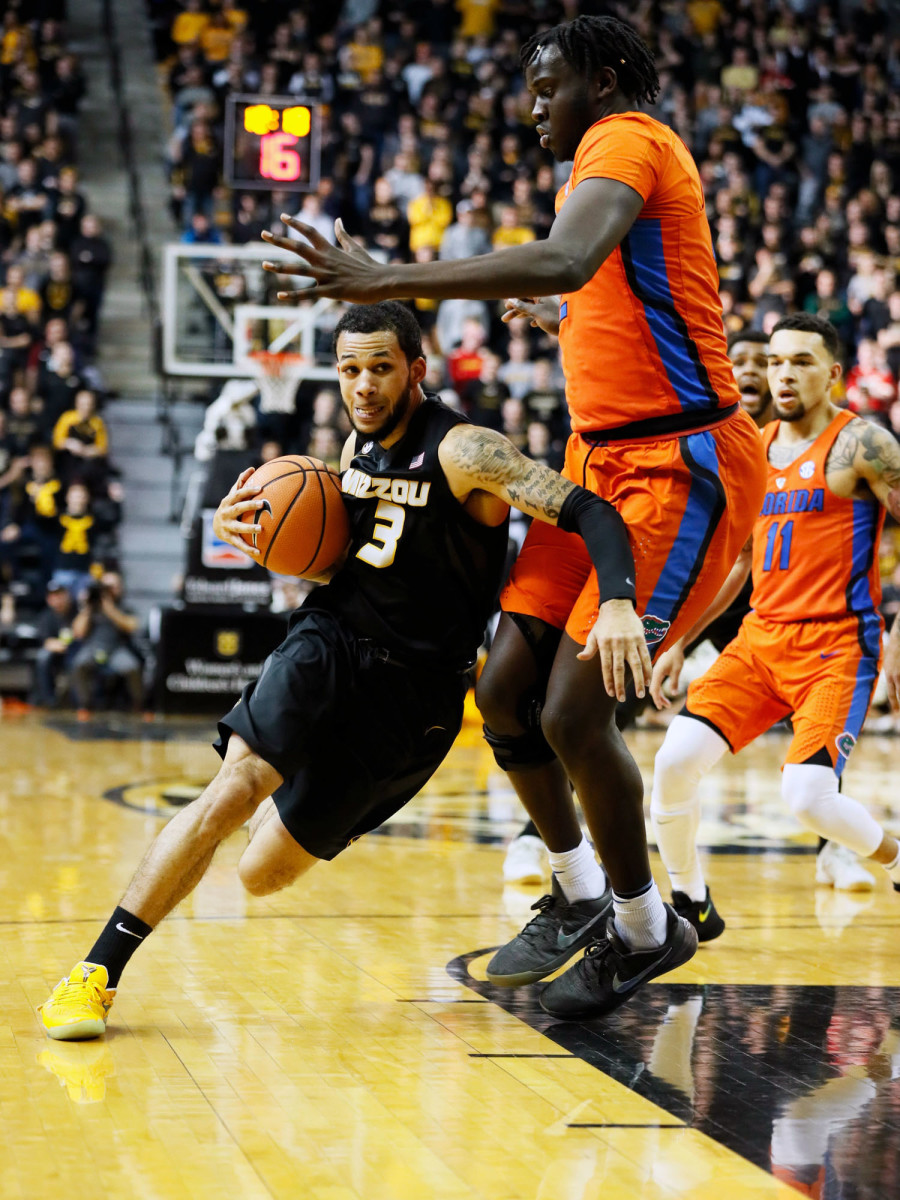
He wasn’t always tough. This may be hard to believe for those who’ve known Martin only so long. It may be hard for his coach and teammates in East St. Louis, who watched him—against doctor’s orders—gimp through the last two weeks of his Lincoln High senior season on a blown-out left knee and never ask for a breather. It may be hard for former Purdue coach Gene Keady, old-fashioned as scrap iron, who calls Martin the best leader he ever had in his 56-year career and “the most mental-tough player I’ve ever coached. I love him because of how he’s hung in there and fought through hardships.”
It may be hard too, for the Tigers who found themselves adjusting to—or, in the case of one prominent 2017 recruit, quickly fleeing—Martin’s slow burn, which can blow blast-furnace hot in an instant. “Get off the floor!” he’ll yell at the player of moment, and it’s almost always for effort breakdowns—slow feet on defense, a halfhearted stab at a rebound, a wariness to brave the clutch of bodies in the paint. “Scared to guard,” he’ll sneer. “You’ve got to come hard! S---. Get open!” Until finally, all in a disgusted rush: “Get off the f-----’ floor!”
Such treatment was actually part of five-star forward Michael Porter Jr.’s calculation as a projected one-and-done; he wanted a handy answer to NBA GMs who doubt his durability and steel. “I heard people say, ‘If you can play for Coach Cuonzo, when you get to the league they don’t even question your toughness,’ ” Porter says. “And I wanted to be pushed.”
How could any of them know? Growing up, Martin was too tall and too skilled a player to be seen as a pushover, but he didn’t exactly project hard. For one thing, as late as eighth grade he had a habit of sucking his thumb; for another, the fear of suspension—of losing basketball—left Cuonzo skittish at the first sign of trouble. So it wasn’t too big a shock when Dale heard that his little brother was crying in the Hughes-Quinn Junior High boys’ room. “I’m tired of this, Big!” he said, when Dale found him sobbing.
Cuonzo told him that a janitor had been bullying him, so Dale, a ninth-grader with the frame of a running back and a hard-earned dislike for male authority, confronted the man. The janitor took a swing. “I beat him something terrible,” Dale says. “Split his head wide-open.”
The oldest of four, Dale took it as his mission to protect his mom from abusive men, his brother from drug dealers, their little sisters from predators. The streets and lots of East St. Louis, the hollowed-out hulk across the Mississippi River from its bigger, more respectable namesake, didn’t abide weakness. So Dale was schooling Cuonzo, be it in the bedroom hoop games, all balled-up socks and air dribbles that left the drywall pocked by stray elbows, or in playground runs where you never called a foul and made sure to dunk, hard.
“You’ve got to be tougher than that, Zo,” Dale harped, and after he took care of the janitor, the message finally stuck. “That was the start of me coming out of my shell, taking that next step,” Cuonzo says.
Life in the Hole did the rest. That nickname stuck to the Norman E. Owens projects because of its sunken entryways, but all agreed with—even took pride in—what it implied: bottom of the bottom, Section 8 housing, poor families living hard by the violent and afflicted. Yet for Sandra Jean Martin, raising four kids in her early 20s, the Hole felt like a step up from the previous high-rise horror. And despite working two jobs—early-morning maid at the Mayfair Hotel, afternoons behind the bar at the Celebrity Room—she insisted her children were “greatness,” taught them to pray and laugh, handed her tip money to anyone in need.
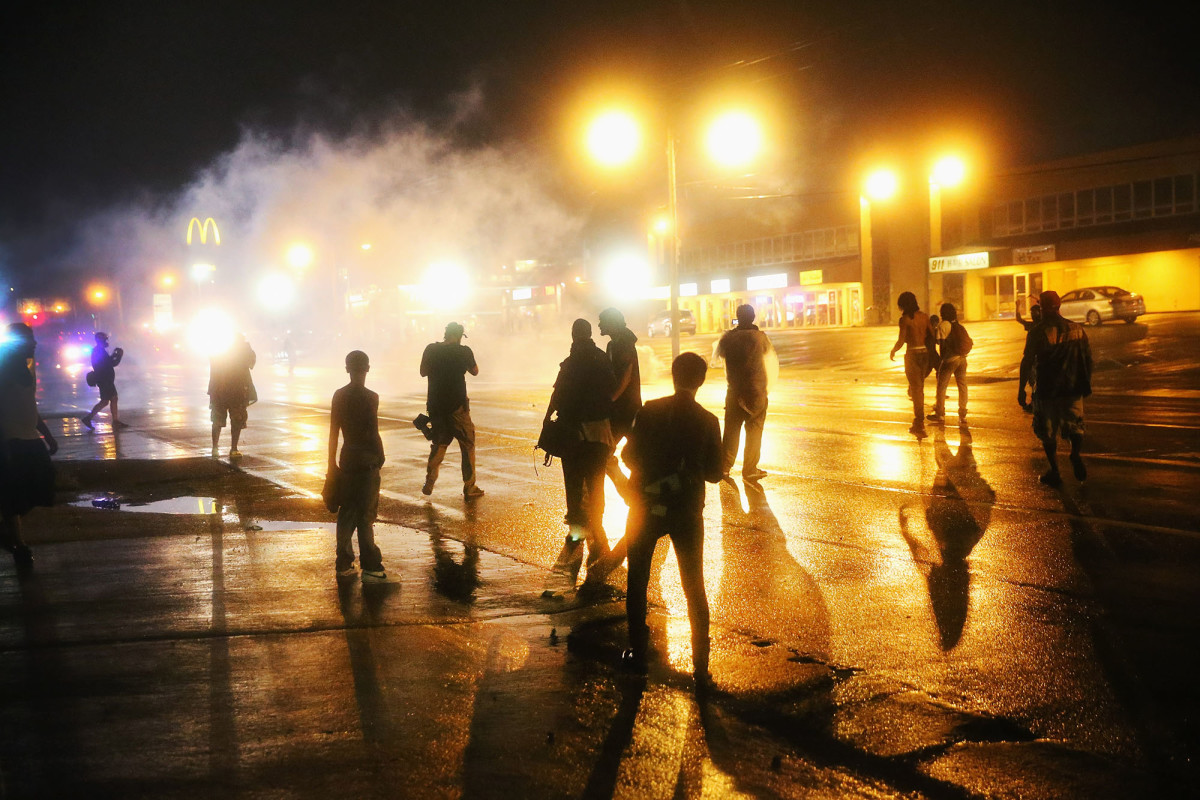
“We were all neighbors,” Sandra says. “Days when I didn’t have things to eat, us and my next-door-neighbor—we came together; I had the potato, and she had the neck bones. She had three babies, and I had my four, and we helped each other. There were good people. It’s just that some were broken more than others.”
Her home had fissures too. Dale’s father was a convict, and Cuonzo and Valencia’s—Pete Cuonzo Whittier, with his new family across the river—kept a cordial distance. Dale was 13 when Sandra’s long-time boyfriend blackened her eye and burned him with cigarettes; Dale leveled a gun at him, but the trigger jammed. Cuonzo, two years younger, loathed how that man abused their mom, tried shielding her, yet often felt great kindness from him. It was confusing. Many Sundays, Sandra would dress them nice and they’d cross the river on the Bi-State bus—three changes—to tour open houses in the white, rich St. Louis suburbs of Kirkwood or Creve Coeur. The family literally had no business being there, but the four kids didn’t know. They’d dodge past serious buyers, sprawl across the soft beds. “You can have this,” Sandra would whisper, “but you have to work hard.”
It wasn’t easy to imagine. In junior high too, Cuonzo had a run-in with a gang leader who swiped his sunglasses. Cuonzo dared to ask for them back, and within seconds he and his buddies were racing low across a field as bullets whizzed overhead. There was a day he passed a body in the street, another shot dead in a car. “You have to leave here,” Sandra kept saying. All of them—even Jamikka, the niece Sandra took in at two—promised.
So that was the plan: Dale would be an athlete or entrepreneur, Valencia and Jamikka would go to college, Cuonzo would rise through basketball. And for a time it worked: Dale went off to Kentucky State. Cuonzo, a 6'5" shooting guard, won two state titles at Lincoln High, was named St. Louis player of the year for his senior heroics, earned a full scholarship. In 1991 he arrived at Purdue with NBA dreams—but the knees of an 80-year-old.
When Keady’s trainer told him that all the wear-and-tear and two surgeries had ravaged Martin’s cartilage—“Bone on bone!” Keady recalled—the coach was furious. Cuonzo averaged 5.8 points and 20.8 minutes a game in his freshman year, and during the season-ending loss to Florida in the NIT, Keady recalls, “I was asking myself, ‘Why the hell did we recruit this guy?’ He couldn’t guard anybody, couldn’t get around. But he worked on his legs with weights, running stairs. And it turned overnight.”
Not quite. Martin became productive enough as a sophomore, but knew that his 0-for-7 career mark from beyond the arc wasn’t going to cut it. He shot and practiced relentlessly, ignoring the pain, because what choice did he have? What with training-table meals and school-issued gear, he had pocket change for the first time. Each year he sent whatever he could, including $2,000 of his Pell Grant check of $2,300, back home. He was the family rock.
“I couldn’t afford to give up,” Cuonzo says. “At Purdue, I played because I had to eat. It wasn’t as if, when I went back to East St. Louis, we had Fortune 500 companies I could go work for. I had to make it work.”
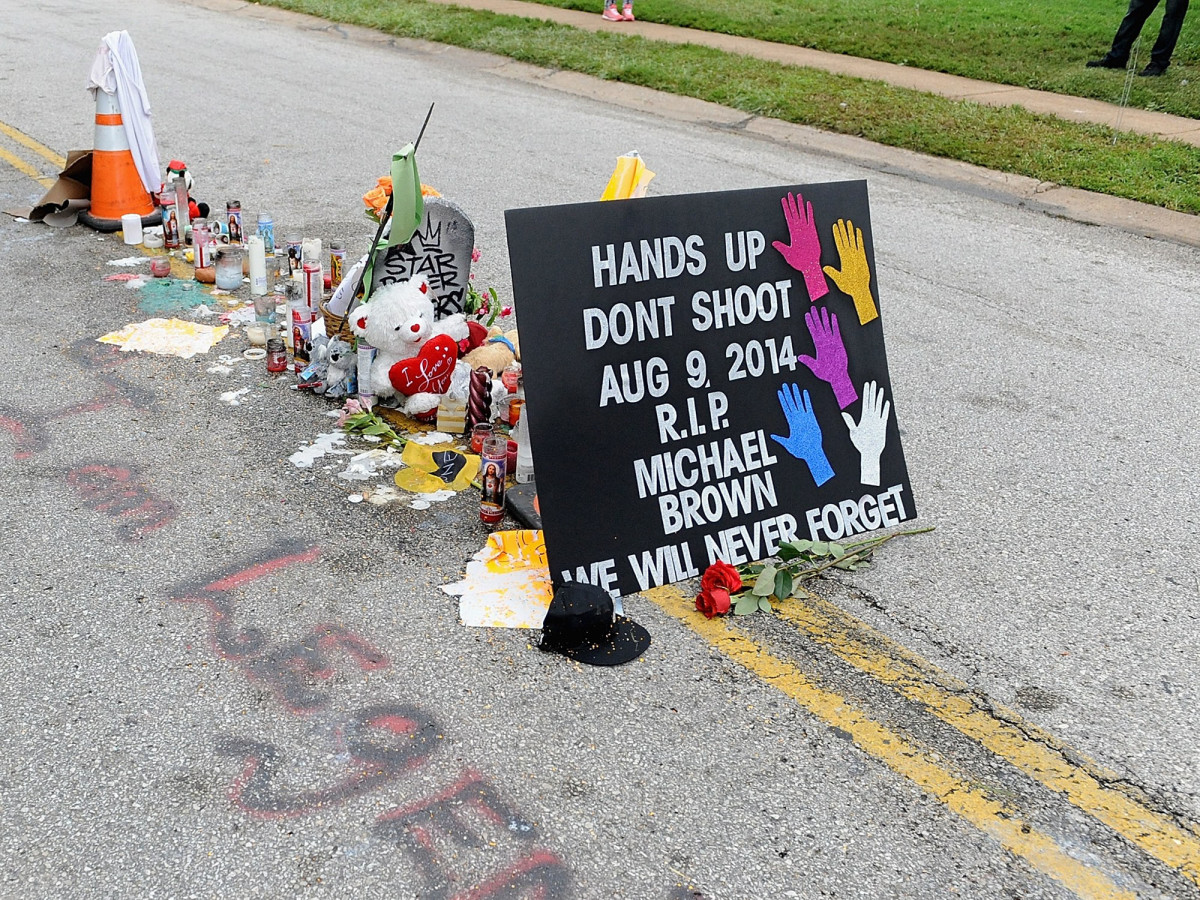
Overnight, the plan began to fray. Valencia, two years younger, learned she was pregnant during her freshman year at Southern Illinois. When Cuonzo confronted her that Christmas, he was so outraged he could only ask, “Is it true?” before bolting the house. She kept the baby, vowed to finish her degree in four years. Cuonzo, skeptical, kept his distance and kept working, a star turned defensive stopper turned deadly beyond the arc. He hit 88 threes as a junior—including a Purdue-record eight in a Sweet 16 win—then 92 as a senior. His school record of 127 straight games stood, bad knees and all, for 16 years.
Cuonzo left Purdue in 1995, short of graduating, but he was drafted by the Hawks in the second round that June. So no one was more delighted when, a year later, Valencia became the Martin clan’s first college grad. “I had to do something to redeem myself,” she says. Cuonzo had just finished a rocky rookie pro season, much of it spent with the Grand Rapids team in the Continental Basketball Association. And the plan was taking another devastating hit. “It’s a bad story,” Dale says.
Indeed, Dale admits that he was up to no good when, in July 1995, he flew into Kentucky, drove to Cincinnati, paid a pair of gunmen from Texas $1,000 apiece for security and tried to sell $80,000 worth of cocaine. But according to Dale, the deal never happened; he’d been set up for ambush at a nightclub. “We pull up, another car pulls up, and they jump out with guns,” Dale says. “Then our guys jump out with guns and everybody starts shooting.”
After one of the other crew, Eric Pugh, was wounded in the crossfire, Dale and his men peeled off in his Acura in a blind panic, loose for 90 minutes until the police caught up with them. Dale claims innocence on the specific charges for which he would be imprisoned—aggravated robbery with a firearm, robbery and two counts of felonious assault with a firearm, one involving a Cincinnati-area police officer—but, he adds, it doesn’t matter. Considering all the other crimes he had committed, the arrest represented justice. “Like, karma,” Dale says.
His mother was hardly so resigned. For the trial in the summer of 1996, Sandra took the overnight Greyhound to Cincinnati, sat in a grimy depot until the courtroom opened at 8 a.m. and waited for her oldest to arrive in shackles. No one had ever seen her so broken; the family scraped together $30,000 for an attorney, but soon that was gone. Meanwhile Cuonzo, after catching on with the Vancouver Grizzlies at the tail end of the ’95–96 season, was offered a spot on the summer-league roster—his last, golden chance to impress.
“I just couldn’t do it,” Martin says. “My brother’s situation was going on, at court, and mentally I wasn’t in a good place to go play. I turned down a great opportunity, because I felt there was a need to be around and give support.”
Then came Dale’s sentence: 21 to 55 years. Sandra’s scream tore through the courtroom. For the first seven years he was gone, she wept nightly. Cuonzo hated his brother, his protector, for that, and alone he’d cry his own tears of rage and fear.
“I had to be strong for everybody else,” Cuonzo says. “I’ve always been a guy, for good or bad, who tries to block stuff out of my head like it never existed. That was the only way to keep moving. But it hit a lot when we’d visit him, just to walk into a prison: a tough, tough thing. It makes your body cold. Similar to walking into a hospital, and seeing somebody in their last days.”
Few know better. With hisAmerican pro career highlighted by seven NBA games and an All-Star season for Grand Rapids, at 26, Martin signed with a team in Avellino, Italy. For a while he led Felize Scandone in scoring. But by November 1997 he had dropped 30 pounds, found himself exhausted and unable to swallow, inexplicably storing bites in his cheeks and spitting into a napkin. After he passed out during a practice, team doctors examined him. The owner’s wife insisted that he fly back to the States for a full workup.
The next day, he and Roberta and their four-month old, Joshua, endured the draining, three-stop trek to their Indianapolis home. Cuonzo made it just inside the front door before collapsing, fighting to breathe; it was nearly 2 a.m. He couldn’t block this one out. “We need to get to a hospital,” Cuonzo said. After X-rays and blood work revealed a fist-sized mass in his chest, a doctor Martin would never see again entered the room. Roberta was there, holding their son.
“I don’t know if you’re going to die,” the doctor said. “But this is life-threatening.”
A biopsy confirmed a malignancy, non-Hodgkin’s lymphoma. Martin’s oncologist, a basketball fan named Andrew Greenspan, put it bluntly: “Your chances are like Shaquille O’Neal shooting free throws.” The season before, Shaq had shot 48.4% from the line. And chemotherapy was, of course, brutal: four-plus months of vomit, exhaustion, weight loss, dissolving hair.
Cuonzo liked to think he was East St. Louis tough, fighting it, but in truth he felt most like a punching bag. More than once he gave up, assumed that he’d die soon. He prayed, hard and often: Please just let me see Josh turn 18. Please.
The cancer slipped into remission in 1998. Keady offered a spot on his staff once Martin completed his degree, so he joined the West Lafayette (Ind.) High staff for a season, earned his bachelor’s in the summer of 2000, then rose over the next eight years to asso-ciate head coach of the Boilermakers. Even today Cuonzo can’t say cancer without pausing, his voice thick. But the lessons learned were the same he’d picked up in the Hole: Keep pushing. Tamp down rage, fear, hope, because what’s the point? But always push: Maybe you’ll stumble onto some good.
That began in 2007. An early appeal had reduced Dale’s sentence to 12-to-40, but in November, without warning or explanation, he found himself released. After promising Sandra that he’d never make her cry again, Dale published a novel based loosely on his life, opened some barbershops in East St. Louis. Then, in 2008, Cuonzo landed his first head coaching spot at Missouri State; he won 24 games in his second season and 26 in his third—good enough to land an offer from the brass-ring program at Tennessee.
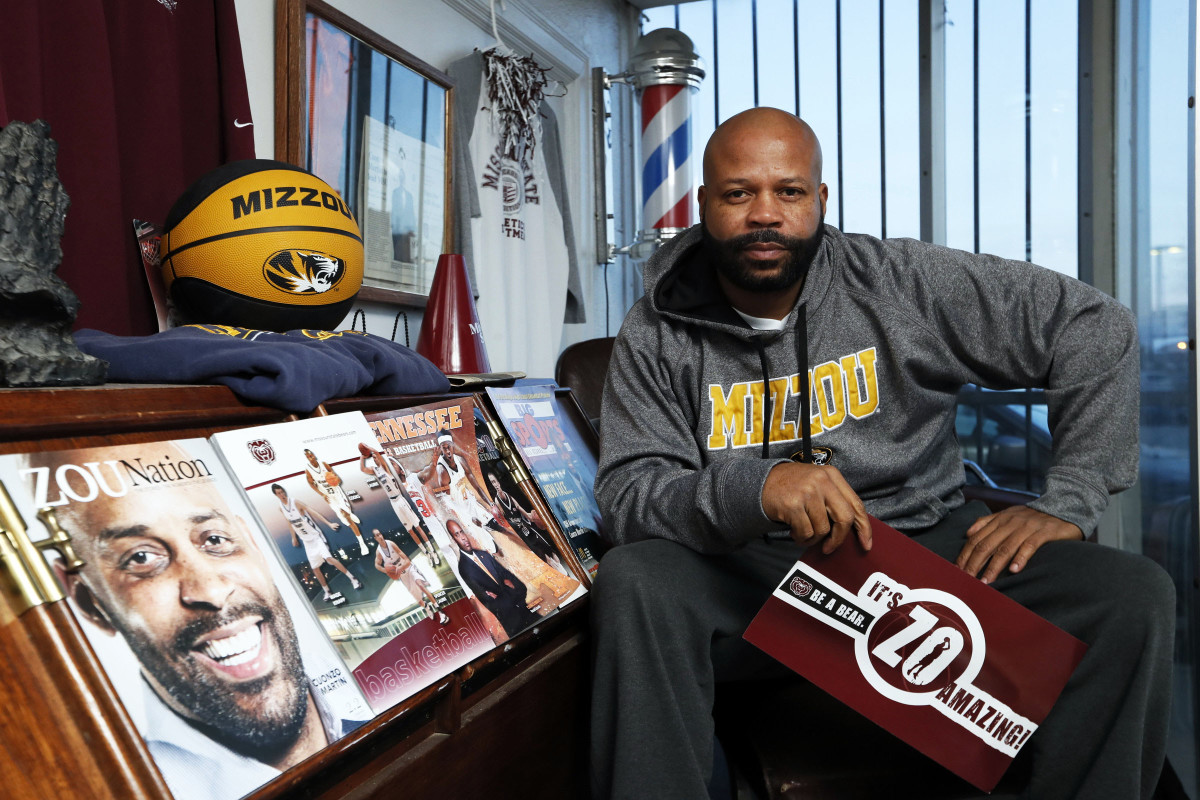
The bad didn’t disappear. In 2010, one of Dale’s twin girls, T’Neil Martin, died at 17 from a brain aneurysm at her home in Lexington, Ky. Cuonzo’s three-year stint in Knoxville included a 2014 run to the NCAA Sweet 16, but not before the fans’ love for disgraced former coach Bruce Pearl resulted in nearly 40,000 signatures in an on-line petition calling for Martin’s removal. Those close to him wonder if race was a factor, considering the black coach with no hint of scandal was found wanting next to a white man with more baggage than an overbooked overhead.
“Here we’re trying to win and you have a fan base—and not all of them—going against you,” Cuonzo says. “So I was thinking, I really don’t want to win this game for them.Let’s win because of who we are. This is what I go always go back to: Whoever’s against me didn’t grow up in that house with me, and they won’t be put in a casket with me. So it doesn’t really matter what they think.”
But that did make it easy for him to leave in the fall of 2014, when Cal made him an offer. Berkeley is about as far, culturally, as one can travel from SEC-mad Knoxville, and that—as well as his $1.64 million salary—made for another welcome change.
Martin and Roberta arranged for some three dozen siblings, aunts, spouses and grandchildren to travel to Lake Tahoe. Come Dec. 24, they all gathered at Cuonzo and Roberta’s place. It was the first time in a decade that they’d all been together, and the first time in circumstances that looked and felt like the cushy open houses that Sandra had exposed them to as kids.
Yes, they had come far: Valencia with four degrees now, and working toward a Ph.D.; Jamikka with a master’s in special education, settled in teaching; Dale past the dark time after his daughter’s death, running a new shop and remaining true to his word; Sandra in her 15th year with American Airlines, processing passengers at the St. Louis airport. So they went around the room and, one by one, spoke of their blessings and gratitude. Cuonzo went last.
Before his first word, he started crying. Everyone but Roberta was stunned. Cuonzo was always so . . . contained. But now he took them back 17-plus years, when Sandra was still haunted by Dale’s prison sentence and Cuonzo first told her of his diagnosis. “It hurt me to tell Momma that I had cancer,” Cuonzo told the room, “because I thought I let her down.”
Then he spoke of growing up and wearing the same clothes every day because there was no money, and how for a time buying pricey duds meant the world, but now he’s back to rewearing the same pants. Because he’d learned that the only things that matter are family and faith. Because he’d made that promise to God to serve Him and do right every day, if only he could see his boy turn 18.
And suddenly, it hit them: Joshua’s 18th birthday was just nine months away—and their Cuonzo was going to make it. They stared while father and son glanced at each other, nodding, and then the whole family cried some more and hugged and agreed that you couldn’t ask for a better Christmas Eve.
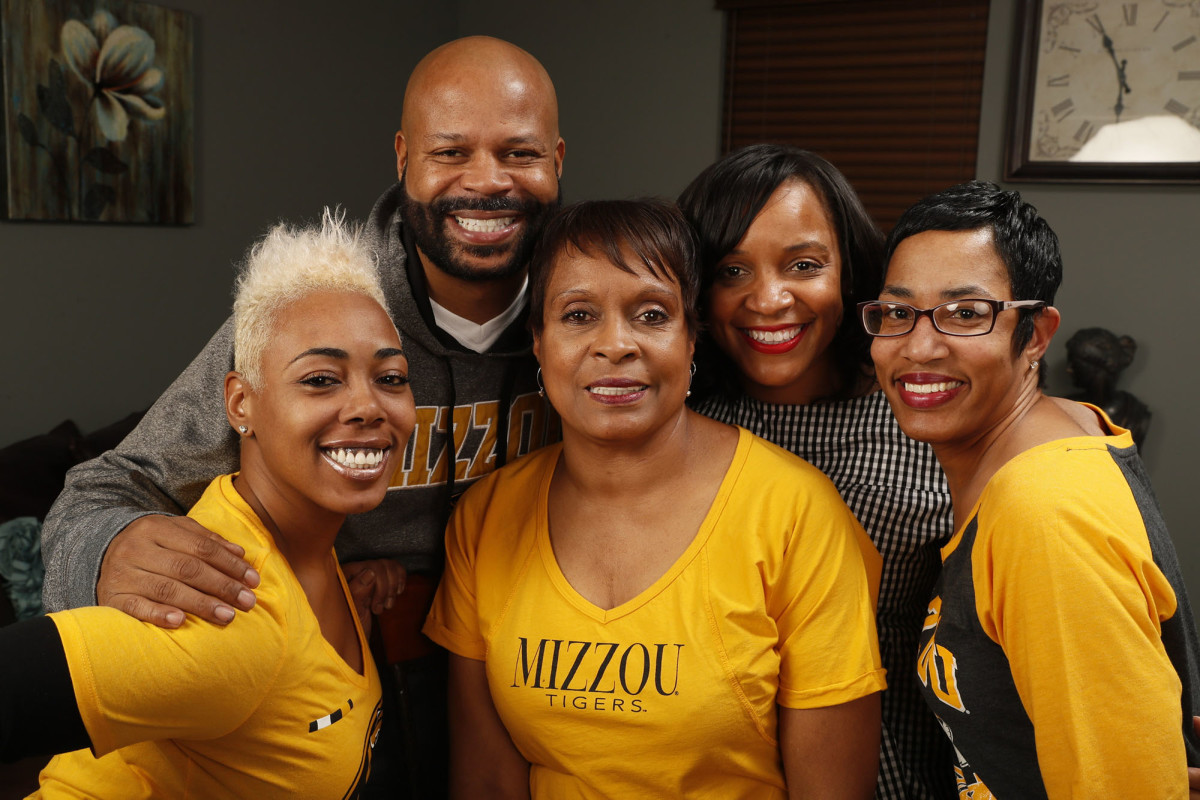
It took just nine days for Missouri athletic director Jim Sterk’s hiring of Martin to pay off big. Even those locked into the truth that, unlike in football, basketball fortunes can be transformed by one key figure rarely have seen it displayed so nakedly. But the most interesting fact, among many, in the ensuing clatter of dominos may be that—despite an ego-boosting seven-year, $21 million contract—Martin knew that he wasn’t the key piece, and was savvy enough to step back and let the other moves fall into place.
Because the hinge figure, last March 15, for Missouri—and any hoops program trying to land the nation’s No. 1 prospect, Michael Porter Jr.—was Michael Porter Sr. The same day Martin was hired, Washington fired coach Lorenzo Romar. His staff, which included first-year assistant Porter Sr., was not retained; a week later the Huskies released the 6'10" small forward from his commitment. The Porter family is famously close, and everyone in Hoopsland knew that not only Michael Jr., but also his five-star younger brother, Jontay, would follow Dad.
Indeed, Missouri had tried to hire Porter Sr. as an assistant the previous year. Despite his inexperience coaching Division I, no fit was more perfect. Porter had been assistant to his sister-in-law, Mizzou’s women’s coach Robin Pingeton, from 2010–11 through ’15–16, and his two daughters, forwards Bri and Cierra, still played for the Tigers. Michael Jr. grew up a star in Columbia, where he played his first three years at Father Tolton Regional Catholic High and got his first taste of college ball as a fan in frenzied Mizzou Arena. Going to Missouri meant coming home. Rarely, in the history of college sports, had cold calculation lined up so neatly with sentiment.
Until his hiring last spring, Martin had only briefly met Porter Sr. But Pingeton had already informed Sterk that the Porters would love to return to Columbia, so—even before Washington released Michael Jr. from his commitment—Martin wasted little time getting to know Michael Sr. better. “We never even talked about Mike [Jr.],” Martin says. “So I guess that part was understood. There was never one conversation where it was said, ‘If we offer you the job, will Mike come?’ ” Asked if he thinks Michael Jr. would’ve gone to a different school than his dad, Martin says, “No, I don’t think so. I think wherever his dad was going, he was going. Close family.”
On March 22, Porter Sr. signed a three-year contract with Mizzou and became Martin’s first announced hire; on March 24, Porter Jr. tweeted his intention to play in Columbia. The coup was so big, basketballwise, that most overlooked the image-burnishing bonus: A mixed-race family, one intimately familiar with the campus and able to go anywhere, was eager to get back to Missouri. “I just want to do everything I can to help restore Mizzou’s atmosphere,” Porter Jr. said before the season. “I know some stuff went on here, but I’m not really too concerned about enrollment. I do want to help the basketball program and the school kind of . . . shine.”
With that lever pulled, the Missouri recruiting line began to thrum. Much of Martin’s early rep arose from his ability to lure talent—Josh Richardson at Tennessee, Jaylen Brown at Cal—but what became striking is how little, relatively, he had to do this time. Because Porter Jr., the best recruit in Mizzou history, didn’t just affirm the program as a blue-chip destination; he campaigned to make it so. First task: Aided by a phone assist from dad, Porter Jr. persuaded top 25 point guard Blake Harris, a fellow former-commit to Washington who’d had zero interest in Missouri, to visit Columbia—then escorted him on a hyped-up tour of the campus that sealed the deal. Those two then got five-star 6'10" forward Jeremiah Tilmon of East St. Louis High to join them.
Jontay’s choice to commit to Mizzou, too, was an apparent lock, but it was Michael Jr.’s presence—and projected departure after one season—that led him to reclassify and leave high school a year early. That way, the thought went, they could have at least one college season together. Who figured it would last two minutes? That’s how long Michael Jr. played in the home opener before exiting the game with hip pain that, subsequently, became a back injury requiring surgery and three-plus months of recovery. The family—and Mizzou basketball—plan for this season seemed done.
Yet in a twisted sense, the injury did Sterk and Missouri a favor: It allowed a clearer picture of why they hired Martin to begin with. The coach’s low-key response to that setback and to Tilmon’s June citation for possession of alcohol by a minor (“A young man or lady should be allowed to make a mistake,” Martin says of his decision to suspend him from the team for a week) proved early indicators of his reaction to crisis. And while Porter’s maneuverings seemed to indicate a player-coddling, AAU-style operation, that sense was soon overwhelmed by Martin’s blunt authority.
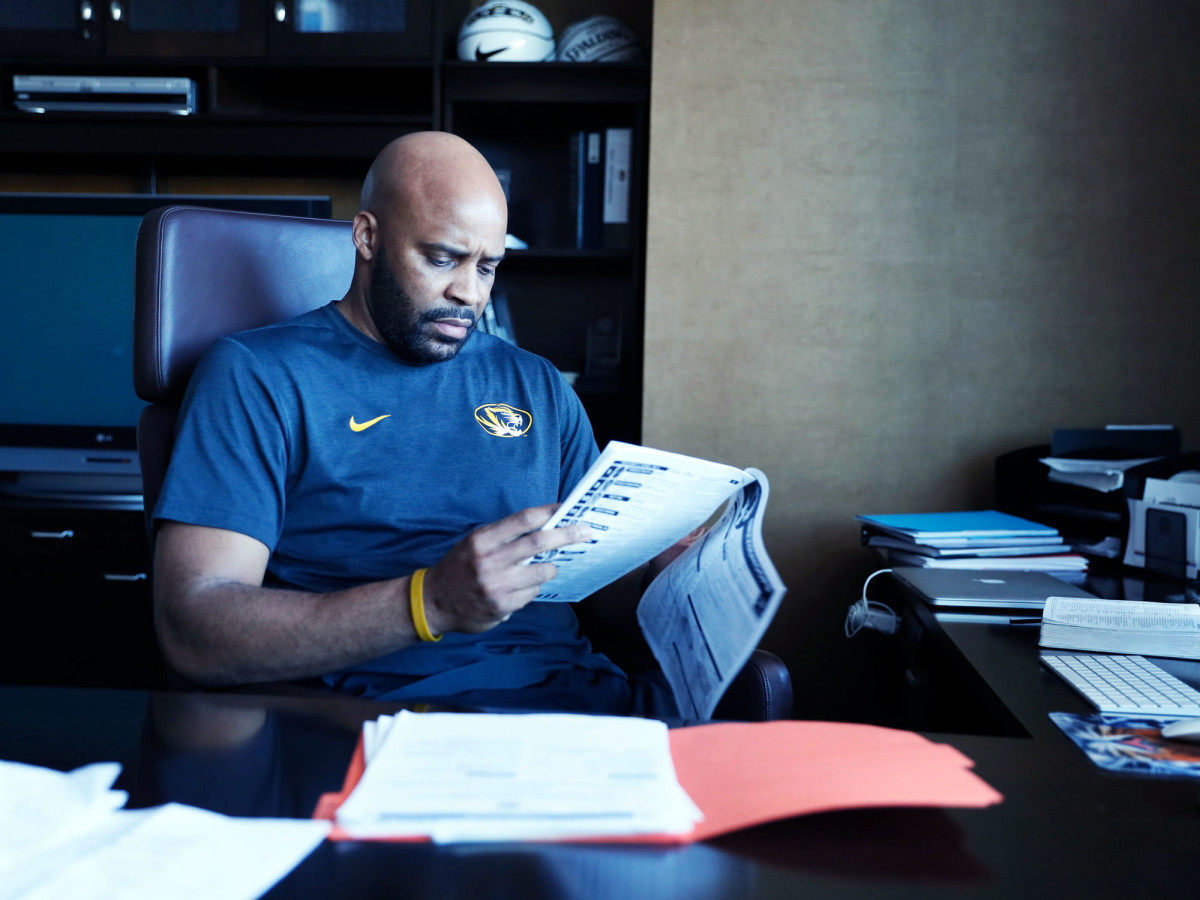
Last Friday—two days after Mizzou’s first conference road win in four years at South Carolina—Harris announced his intention to transfer. Porter’s absence didn’t help, but Martin’s tight rein on both minutes and demeanor proved decisive. “Understand: It’s not about Blake,” Martin snapped at Harris in the locker room after Mizzou’s comeback win over St. John’s on Nov. 24, “It’s about us. Winning.” Now carrying just two scholarship point guards, the next day the Tigers lost—after a slack pass by new starter Jordan Geist—in the final second to Florida. Harris might have noticed. But for now, there’s no doubt whose word holds the most sway in Columbia. “Cuonzo’s really become a role model for not just basketball and other sports programs,” Steelman says. “He’s been good for the entire university.”
On one level, Steelman is referring to cliché sports lessons—overcoming adversity, the rewards of hard work and unity—not to mention the fun of surpassing last year’s win total (eight) by mid-December. But he’s aware of the optics, in a state with so many recent bad ones, of a black man taking charge. And his role model isn’t just proud of bringing East St. Louis values to Columbia; Martin intends to ramp up his efforts to give back. Together with a dozen high school buddies and Dale, in 2015 he created a charitable group for his hometown, Bonded Together, that is dedicated to providing homes for single mothers, giving scholarships and refurbishing basketball courts.
The initiative is still in the early stages; so far Bonded has given out 20 $1,000 grants to East St. Louis students, and it plans to rebuild its first court at Lincoln Park this summer. But it’s no accident that its focus falls on the three elements that gave Martin a way out. He still considers himself “part of their struggle.”
Even more, Martin is sure that he owes it to family and friends—those living and those lost—to speak out. The next time there’s a protest on campus or in St. Louis, he won’t hesitate. Stop dwelling on the protest, Martin will say. Understand why so many are kneeling, marching and screaming in the first place. “People who don’t know say, ‘How did we get to this point the last three or four years?’ Well, it hasn’t been three or four years,” he says.
“Have we made progress? Yes. But if we’re a part of this country—and we’re all a part of it—we all should have equal rights. I go back to the youth: We don’t teach them to see color. We teach them to see people, humanity. Raise ’em like that, we have a chance to be a beautiful place in the next 20, 30 years. But right now we have a lot of work to do.
“With sports, I’ve heard someone say, ‘Why do they have to protest like that?’ Well, in the project house I was saying it for years. You didn’t hear me in the Hole. I was saying it—but if I don’t have financial wealth or a level of status, then I don’t have a voice—so nobody was listening.” Martin pauses. “Well, now you’re listening.”
Just by winning, of course, Martin could go far in addressing the school’s immediate pain: Nothing gooses enrollment like a deep run into March. But some, like Middleton, believe that Mizzou’s best way forward is to embrace its unique position in the debate and become the national model for addressing our forever war over race, protest and power. “It’s time for this university to take the lead,” Middleton says. “Let’s study this and do something to get us beyond where we are. Middle of the country. This is the place.”
Missouri? The coach couldn’t agree more.
“Let’s be the forefront,” Martin says. “I came back at a beautiful time, because I’m going to be part of the change. You can’t be afraid of change.”
